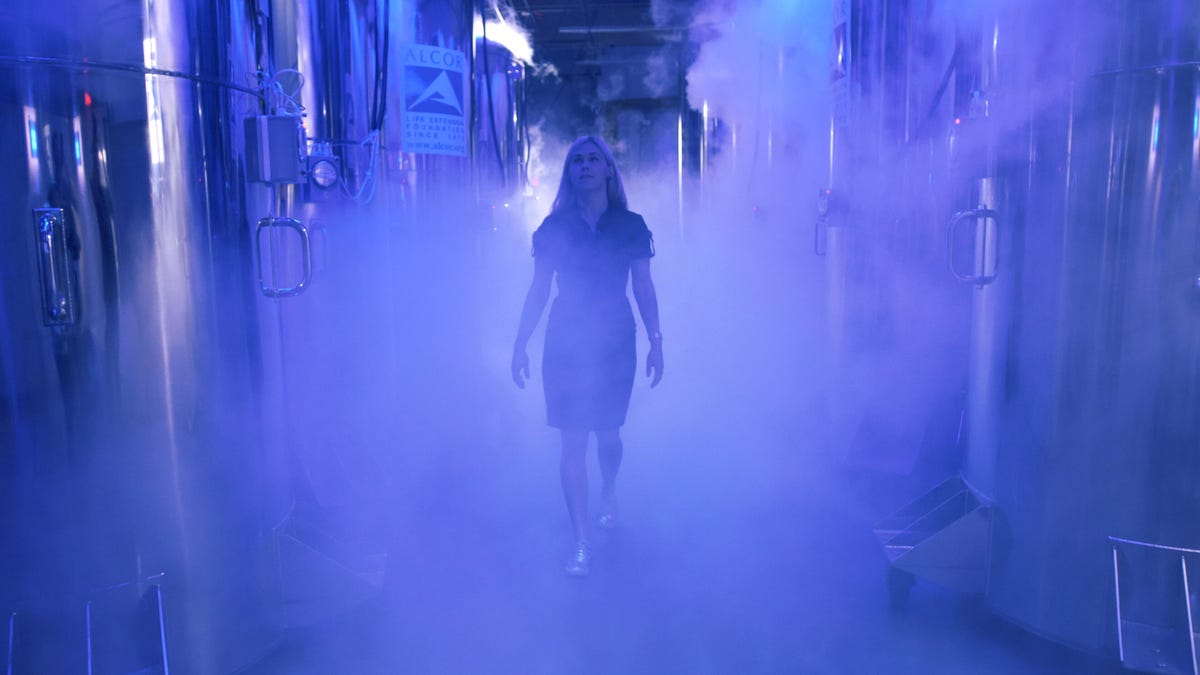Frozen in time: Inside the facility preserving the dead through cryonics
Rows of stainless steel tanks filled with liquid nitrogen hold the bodies (and heads) of more than 170 people. Welcome to the strange world of cryonics.

Who wants to live forever?
Welcome to the Alcor Life Extension Foundation, an organization in Scottsdale, Arizona, that offers people the chance to preserve their body after clinical death in the hopes that they can be revived in the future.
Through a mixture of medicine and mortuary practice, Alcor preserves the bodies (and heads) of the dead by slowing lowering their body temperature and storing them in giant vessels of liquid nitrogen, where they will stay for decades at -196 C.
Linda and Fred Chamberlain
Alcor was founded by Linda and Fred Chamberlain in 1972. The couple met at a cryonics conference in early 1970, when Linda was in college and Fred was working as a NASA engineer. The two set out to form an organization that could offer people a second chance at life.
"Our goals were to start an organization that could save people's lives and give them an opportunity to be restored to health and function," says Linda Chamberlain. "If we'd known how hard it was going to be, we might not have tried to do it. But... once you get started, something about saving lives, you can't give up."
James Bedford
The preservation of James Bedford was the first, "albeit crude," cryonic suspension, according to Alcor. Bedford was preserved in a "cryocapsule" in 1967 (five years before Alcor was founded) and was transferred into Alcor's facilities in 1991.
Cryonics
An early copy of Cryonics magazine sits in Alcor's offices. According to Alcor co-founder Linda Chamberlain, Alcor has constantly worked to improve its methods to ensure the best outcomes for the people who enter cryopreservation.
Alcor's patients
Photos of Alcor's patients line the walls of the facility, but there is no mention of the date of death. Each plaque lists a birthdate and the date they were cryopreserved. Alcor hopes that its patients have not completely died but will one day be restored to full health and function.
Vitrification
According to Alcor, the best way to preserve a human body is through vitrification, rather than freezing. The goal is to replace the water in the body with cryoprotectant, a kind of medical-grade antifreeze, which prevents ice crystals forming and damaging the body's cells. This way, when the deceased person's temperature is lowered, the body vitrifies, turning into a glass-like state, rather than freezing. In this state, Alcor says it can keep a body preserved for decades on end.
Saving the lives of the dead
When a candidate for cryopreservation arrives at Alcor, their body is intubated and kept on ice while a mechanical thumper keeps blood flowing around their body, all in a bid to minimize cellular damage. But while each of these people has been declared clinically and legally dead, Alcor refers to them as "patients."
"Legal death only really means that your heart and your lungs have stopped functioning without intervention," says Linda Chamberlain. "It doesn't mean your cells are dead, it doesn't mean even your organs are dead."
The operating room
Inside the operating room at Alcor, bodies are prepared for "long-term care." Here, bodies are filled with cryoprotectant and slowly cooled in a process that takes hours.
Scanning the brain
Alcor uses a CT scanner to ensure no water or ice remains in the brains of patients. According to Linda Chamberlain, these scans will also be used by "future revival physicians."
Surgical instruments
The operating room feels like a cross between a hospital and a morgue. The "patients" may be dead, but surgeons work to preserve their bodies for future life.
The operating room
While Alcor offers full-body cryonic preservation for $220,000, the organization also offers "neuro preservation" for $80,000. In this process, the head is removed from the body (from the collarbone up -- what is referred to as the "cephalon") and cryopreserved on its own. During the procedure, the cephalon is clamped within this box in a steel ring.
A window into the process
A glass cabinet in the operating room offers a glimpse of the more intense parts of the surgical process.
The "long-term care" room
Once Alcor's patients have had their body temperature reduced to liquid nitrogen temperature (-196 C), they are brought into the long-term care room, where they stay. These stainless steel vessels, known as "dewars," can hold up to nine patients. In total, this room holds more than 170 people.
Entering long-term care
Each dewar can hold four full bodies around the outside, and five "neuro patients" down the center, all of which are carefully lowered into the liquid nitrogen. According to Linda Chamberlain, the full-body patients are preserved head down, to ensure that the most vital part of the body -- the brain -- will remain cold, even if the worst happens and the liquid nitrogen boils off.
The final resting place
Alcor refills the liquid nitrogen in its stainless steel preservation chambers every few weeks and monitors the temperatures inside with computer controls. The patients in here will stay in cryopreservation for decades -- and may never come out.
According to scientists, the promise of cryonics is a pipe dream, and the human race is thousands of years away from completely understanding the brain well enough to know what needs to be preserved -- let alone having the technology to revive someone. But Alcor is nothing if not optimistic.
"Our best estimates are that within 50 to 100 years, we will have the medical technologies needed to restore our patients to health and function," says Linda Chamberlain. "I'm an optimist."

